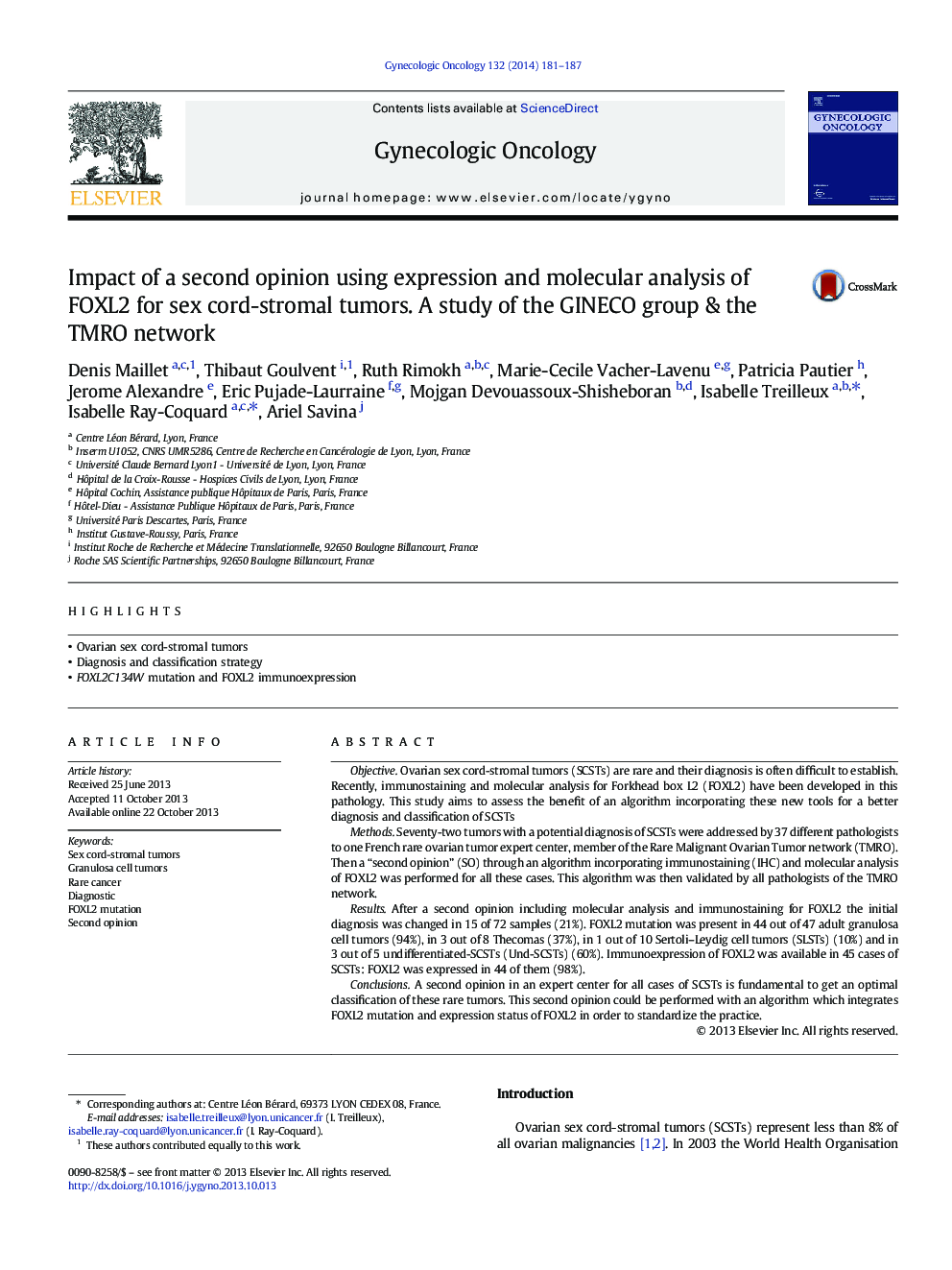| Article ID | Journal | Published Year | Pages | File Type |
|---|---|---|---|---|
| 3942825 | Gynecologic Oncology | 2014 | 7 Pages |
•Ovarian sex cord-stromal tumors•Diagnosis and classification strategy•FOXL2C134W mutation and FOXL2 immunoexpression
ObjectiveOvarian sex cord-stromal tumors (SCSTs) are rare and their diagnosis is often difficult to establish. Recently, immunostaining and molecular analysis for Forkhead box L2 (FOXL2) have been developed in this pathology. This study aims to assess the benefit of an algorithm incorporating these new tools for a better diagnosis and classification of SCSTsMethodsSeventy-two tumors with a potential diagnosis of SCSTs were addressed by 37 different pathologists to one French rare ovarian tumor expert center, member of the Rare Malignant Ovarian Tumor network (TMRO). Then a “second opinion” (SO) through an algorithm incorporating immunostaining (IHC) and molecular analysis of FOXL2 was performed for all these cases. This algorithm was then validated by all pathologists of the TMRO network.ResultsAfter a second opinion including molecular analysis and immunostaining for FOXL2 the initial diagnosis was changed in 15 of 72 samples (21%). FOXL2 mutation was present in 44 out of 47 adult granulosa cell tumors (94%), in 3 out of 8 Thecomas (37%), in 1 out of 10 Sertoli–Leydig cell tumors (SLSTs) (10%) and in 3 out of 5 undifferentiated-SCSTs (Und-SCSTs) (60%). Immunoexpression of FOXL2 was available in 45 cases of SCSTs: FOXL2 was expressed in 44 of them (98%).ConclusionsA second opinion in an expert center for all cases of SCSTs is fundamental to get an optimal classification of these rare tumors. This second opinion could be performed with an algorithm which integrates FOXL2 mutation and expression status of FOXL2 in order to standardize the practice.
